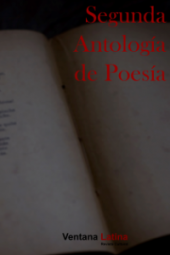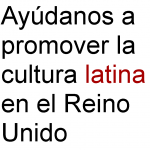10 questions with photographer Pablo López Luz
By Verónica Sanchis. Translation by Jessica Sequeira
Pablo López Luz was born in Mexico City in 1979. He completed a master’s degree in art at New York University in 2006, and since then his photographic work has been displayed in numerous exhibitions, including the Museum of Modern Art (San Francisco), Museo de Arte Moderno (Mexico City), Museo de Arte Carrillo Gil (Mexico City), and Centro Fotográfico Alvarez Bravo (Oaxaca, Mexico), among many others.
Pablo’s work has been published in well-known international magazines such as FOAM (Holland), National Geographic (USA) and Courier (France). He has also been extensively published in Mexican magazines including Arquine, Código, Picnic and Complot. Some of the awards he has won include the Premio Velázquez (2005), Certamen Jóvenes Creadores (2007 and 2011), and IILA Photography Award in Rome.
This talented photographer was recently finalist in the competition Syngenta Photography Award, whose exhibition was shown in the spaces of Somerset House in London. Pablo currently lives and works in Mexico City. To enjoy his work you can visit his web page or click here to see a collection of his work.
1. What inspired you to be a photographer?
I think that my first inspiration was a German friend of my parents, who was also my godfather. He worked most of the year in order to be able to travel and photograph the places he visited. He was a daredevil, since he traveled to places that were difficult to access, and in simple conditions. When he came to Mexico to visit us he brought with him hundreds of photos from his latest trips, which he showed to us, projected onto a wall, after we finished our meal. I was quite young then, probably eight years old or so, and I remember that the idea of being able to travel and arrive at those far-off places seemed fascinating.
On the other hand, my father was also enthusiastic about photography, and in addition to taking photos was subscribed to various photographic magazines like National Geographic, which we would look at together every time it arrived at the house. These are my first direct memories involving photography. My father gave me my first camera around that time, and since then I have always had a camera accompanying me.
2. Do you believe there exists such a thing as a ‘Latin American style’ in photography?
I don’t think so. For many years there was a tendency in Latin America to work in black and white, and many photographers worked on themes such as the indigenous people or the working class in their countries. I believe that these were the photographs most seen abroad. Perhaps for this reason one could talk about a ‘Latin American style’. However, there have always been photographers working on all types of topics and searching for different ways to approach photography.
Speaking of contemporary Latin American photography, I think that it is even more difficult to speak of a shared photographic style. There is certainly always an emphasis on social issues, for obvious reasons, but the diversity of themes, styles, and genres is enormous. And let’s not even talk about the idea of continuing to unite Latin America under a single identity.
3. What about Mexico inspires you?
Mexico has many things that inspire me. At the end of the day it is my country, the country where I was born and the place where I have chosen to live. There are themes that inspire me photographically: the relationship of man with his environment, the landscape of the megalopolis of Mexico City, the intrinsic relationship that we have with our history (whether this be the pre-Hispanic past or contemporary national history). The enormous natural resources we have throughout our country and the diversity of the Mexican landscape also inspire me.
4. What motivated you to develop photographic projects with an aerial perspective?
It’s worth stressing that in my project Terrazo, in which I photograph the urban landscape of Mexico City and other cities, few of the photographs are specifically aerial. The majority of the photographs in the series were taken very high up, from places I discovered over the course of the project. The reason I decided to photograph from this distance was to address the relationship between man and his surroundings in these big cities. The idea of being able to dramatise daily life interested me; one could look at a specific space at a specific moment from a distant point of view, almost like the stage on which day-to-day events in the city unfolded.
With the aerial photographs in particular, my main motivation was that I wanted to portray the vastness of the urban landscape of a specific zone of Mexico City. I wanted to be able to emphasise the growth of the city and the creation of a new urban landscape that has completely supplanted the natural landscape previously found there.
As I carried out the project, other themes emerged, such as the ecological impact of this landscape, the human struggle for survival, the social disparity that exists in the country, and so on. Later, I would work on another project, which would be comprised almost entirely of aerial photographs of the city of Acapulco, Mexico.
5. Despite the fact that landscapes predominate in your work, have you ever considered including portraits in your projects?
Yes, it is a strong interest of mine. A few years ago I did a photographic project involving young boxers in the city; it interested me to be able to jump from the distance of landscapes, to the detail of the people who live in the city. The project never ended up convincing me, and I shelved it. Since then, however, I have always wanted to return to the portrait genre, which is a genre I love. The moment I find the exact theme I am searching for, or the people on whom I would like to concentrate, I will return to the portrait.
6. How do your photographic projects develop from idea to practice?
First, an idea emerges for the project I want to develop. Occasionally the idea can be as simple as wanting to photograph a specific city and see what themes come out of it. In other cases I have a clear idea of the concept behind the project, such as in my last project Pyramid, in which I concentrate specifically on the reinterpretation of the pre-Hispanic world in the contemporary city. However, in all my projects, it is during ‘practice’ that I discover the specific narrative lines or the final aesthetic. The original idea for the project always differs substantially from the final result, and this is one of the things I enjoy most about the photographic process. For this reason, my projects also always take a good amount of time to be developed. I consider myself slow in my way of working.
7. Are you currently working on a new project?
Yes. I am finishing a project titled Pyramid, which I referenced in the previous question. The main idea is to depict the reinterpretation of the pre-Hispanic world by contemporary Mexican society. The project seeks to question the idea of ‘identity’ and the role that history has in the contemporary world. A small publication of the photos by Toluca Editions, in Paris, will come out at the end of this year.
8. Let’s talk a little about the photographic work selected for the Syngenta Photography Award competition.
The photographic work chosen for the award was a selection of ten photographs from the Terrazo project. The theme of this year’s Syngenta award was Urban vs. Rural, a theme with which I have worked directly in my projects. In making the selection of photographs for the competition, clearly I concentrated on those images where the relationship was most apparent. In particular, I selected aerial views of Mexico City showing the disproportionate growth of the urban capital, and to contrast with that, I selected images of natural spaces in which the presence of man is less obvious, or where he has begun to be seen as a latent threat. The photographs from this series were taken in Mexico City and Tijuana, Mexico.
9. Can you tell us what you find most interesting when you look at the work of other photographers?
This depends completely on the project. However, what I generally look for is, first, the intention of the photographer behind the project presented, and, second, the aesthetic design and narrative of the photographs. I think that these two things are what most interest me; they are also the main points which cannot be missing in a photographic selection.
10. What qualities do you think make a good photograph?
I think that my answer is quite similar to the previous question, although in this case I would invert the two points. In the first place, regarding a single photograph, the most important is the visual design of an image. If the first impression is surprising, then there will be a second reading of the photograph. The second is the content, or the narrative behind an image. Today it is relatively simple to create an image that ‘looks good’; this is the main selling point behind all photographic brands. For this reason, if the image does not contain content behind the visual aesthetic, then it doesn’t work, and remains empty; therefore I would say that it is not a good photograph.







 Copyright © 2024 Company no. 6720498 10 Kingsgate Place, London NW6 4TA, United Kingdom Tel: 020 7372 8653
Copyright © 2024 Company no. 6720498 10 Kingsgate Place, London NW6 4TA, United Kingdom Tel: 020 7372 8653